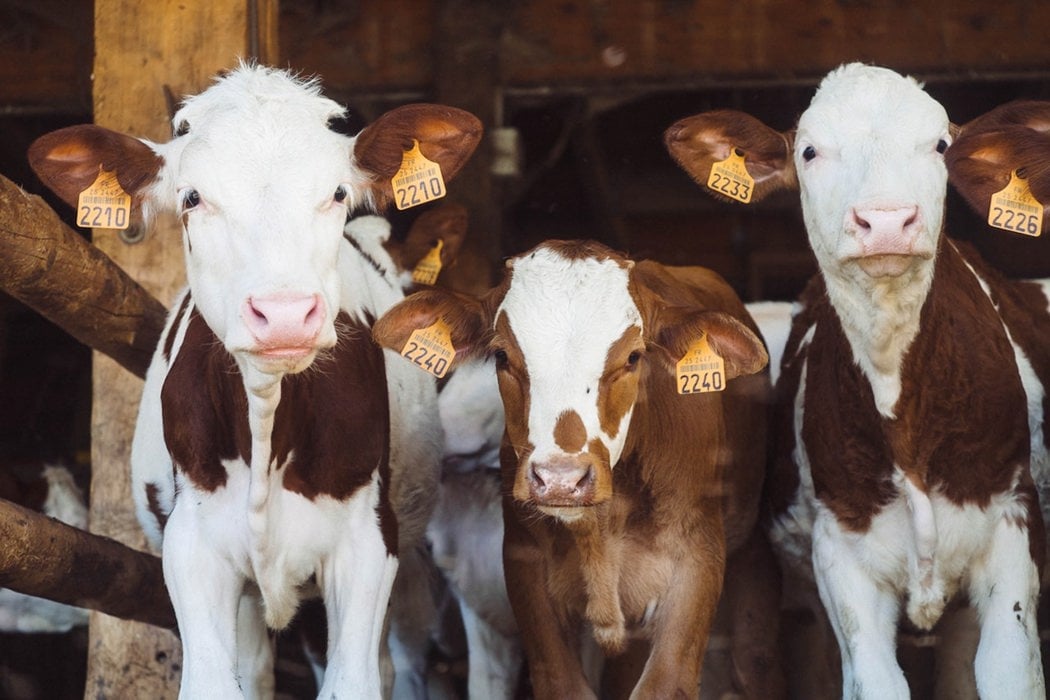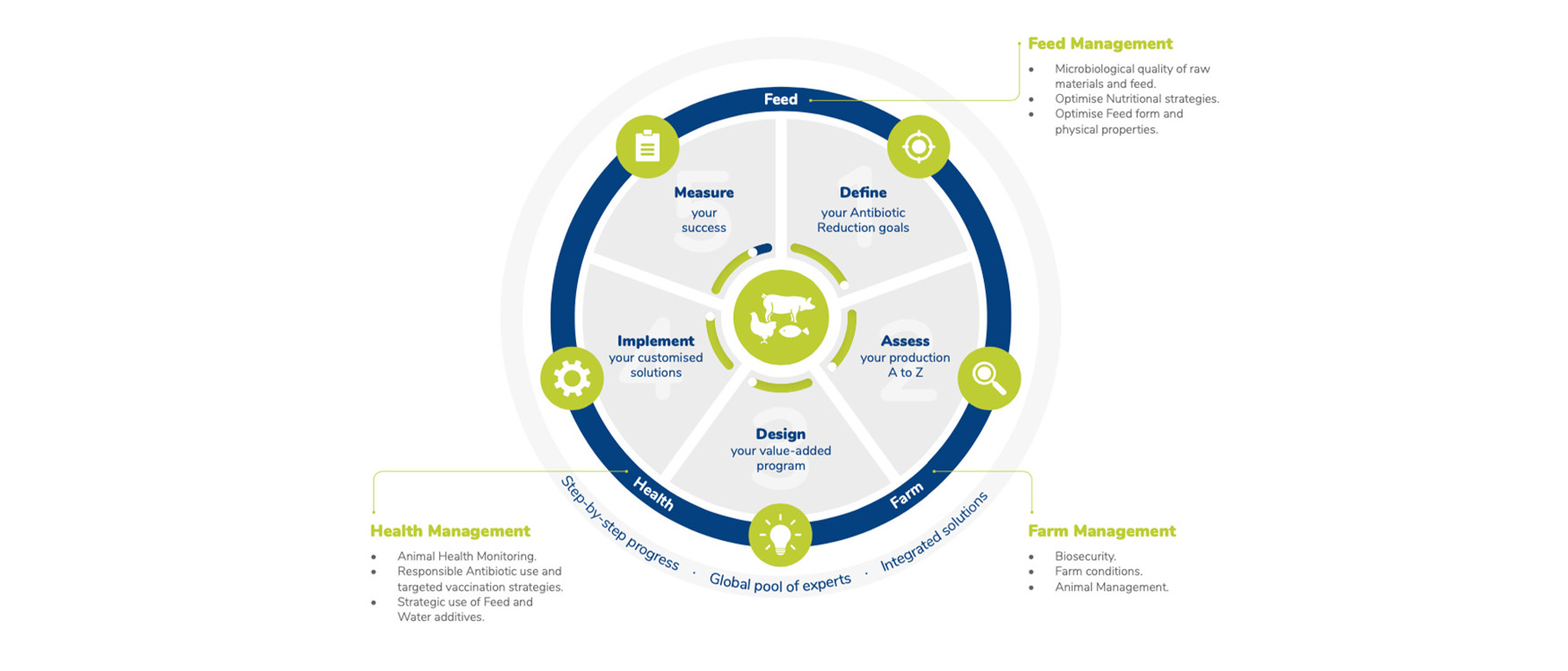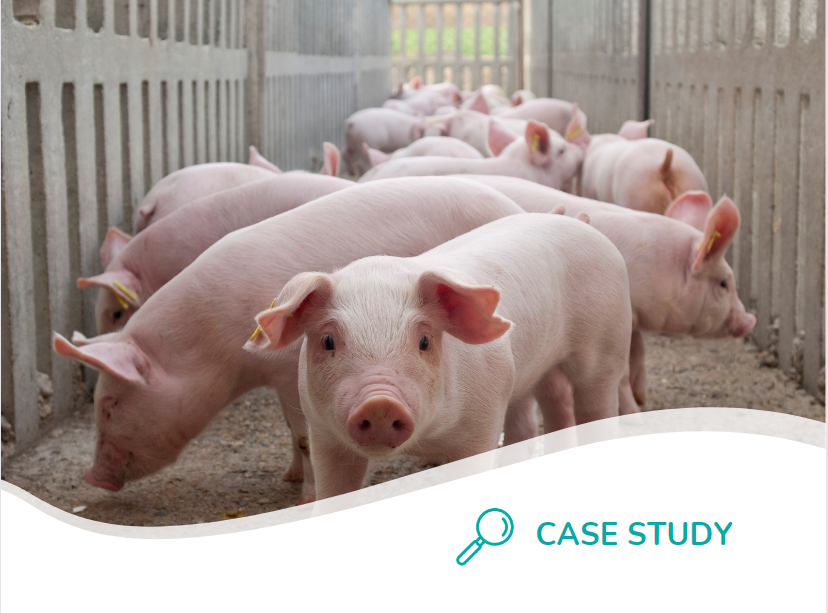Feed
To grow livestock in a way that is healthy and efficient, we need to maintain the delicate between animals’ nutrient requirements and the nutrients we supply them with. This guarantees that we provide animals with all the nutrients they require at any specific moment, without overloading them with excessive nutrients that could compromise their health or pollute the environment.
No two herds are the same – each comes with its own heritage, context and challenges along the lifecycle. And we will also always have variability in raw materials and their quality. To optimise nutrition, we analyse both the animal physiology at its actual health status, and the nutritional, microbiological and physical quality of the feed.
Farm
Optimising farm management is crucial to reducing antibiotics in a responsible way and improving production efficiency. In many regions, antibiotics are often used as a “safety blanket” to hide farm management risks. As production systems expand and labour scarcity intensifies across our different regions, the importance of farm management grows. Our team of experts helps producers define and improve the aspects of farm management that are most critical to reducing antibiotics successfully and producing animals efficiently and sustainably.
Health
Keeping animals healthy, which also involves managing viral and parasitic challenges, is essential for enhancing resilience and minimizing the need for antibiotics. Maintaining a healthy gut, including through the synergistic use of feed additives, is a prerequisite for overall animal health and performance, and reduces the need for antibiotics.


